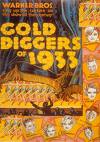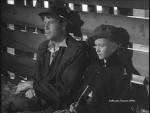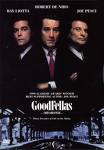
Twentieth-Century Social History in American Movies
Spring 2010
Tuesdays, 2:50-4:40 and Wednesdays, 3:10-6 p.m. (lab), CUE 409
Note: You must sign up for the Lab (249680) as well as the lecture (249503).
Go to Course Blog
Dr. Donna Campbell
Avery 357 • 335-4831
campbelld@wsu.edu
Office Hours: Tuesday and Thursday 12-1 p.m. and by appointment. I am on campus all day on Tuesdays, Wednesdays, and Thursdays, so please don't hesitate to ask to see me during those times.
IM, Facebook, and Twitter: drcampbell6676
About the Course
Hollywood's America: Twentieth-Century Social History in American Movies surveys some of the significant social issues and important historical moments of the last century as they were portrayed in films of the era by white, African American, and Native American directors. We'll explore the ways in which Hollywood portrayed poverty, racism, immigration, sex, addiction, and violence, and we will also discuss the Great Depression, the rise of gangster culture in the 1920s, the Hollywood Production Code, the star system, film noir, and other features important to an understanding of film during this period. A consistent theme in the pictures we'll see is the idea of the American dream: the ways in which it is defined by people in different decades, the events that cause it to seem possible (or impossible), and the ways in which films present the obstacles that prevent people from achieving it. To facilitate our discussions of the films, class members will be expected to read short pieces (essays or short stories) related to the film for that week, and most weeks there will be student presentations related to the content of the film.
Scope of the course:
- Because we'll be looking at these films in chronological order, more or less, you should be aware that the early films will be silent (with music and intertitles), and many of the films will be in black and white. Among the films currently scheduled for viewing are Within Our Gates, Redskin, The Public Enemy, Golddiggers of 1933 , The Grapes of Wrath, Mildred Pierce, A Place in the Sun, Sullivan's Travels, Bonnie and Clyde, Boyz n the Hood, Goodfellas, and Smoke Signals.
- Our focus is on films that reflect or represent some social issue in twentieth-century American culture. This is not a "first and greats" history of film class: we won't be watching The Jazz Singer, Citizen Kane, or other standard milestone films, although we'll be viewing many classic films.
- These films reflect the cultural attitudes of their respective eras, and they may use images or words, or may express opinions, offensive to current viewers even when the intent of the film is to protest racism, sexism, or other forms of social injustice. The films are presented in their original form, so if you believe you would be unable to watch material that may be offensive despite understanding its historical context, you should drop the class now.
Course Goals. The goals for students in the course are as follows:
- To critically analyze, interpret, and evaluate a number of films and to ground that interpretation in the context of American film history, including directors, the star system, the Pre-Code era, and so forth.
- To learn basic technical terminology for discussing and analyzing films. including visual and audio features (the long shot, the close-up, and so on) as well as film genres.
- To analyze the way in which films convey the concerns, social problems, and stylistic features of their respective eras, and to see those features as reflecting the culture in which they were produced
- To search for instances of how American film culture, historically conceived, influences contemporary culture and to assess the ways in which films affect our current perspectives on such issues as race, class, gender, poverty, and sexuality.
- To work with and learn to evaluate primary and secondary scholarship on film, including locating films legally online, learning to use the MLA Bibliography and other databases to find secondary sources, assessing web materials for reliability, and locating primary source materials. We will complete this task during a workshop in the third week of the semester.
- To produce papers, multimodal compositions, and other means of disseminating the results of focused student inquiry and research, including blogs, reports, and group presentations.
Textbooks
| Belton, John |
American Cinema, American Culture |
McGraw Hill |
2009 |
978-0-07-338615-7 (Required) |
Corrigan, Timothy |
A Short Guide to Writing About Film |
Longman |
2009 |
0205668941 (Required) |
Bordwell, David & Thompson,Kristen |
Film Art |
McGraw Hill |
2010 |
978-0-07-338616-4 (Recommended) |
Schedule of Assignments. This is a tentative guide to the assignments; it may change as the course progresses. Other readings will be available online. Most of the films will be available on reserve in the library, and many are available on Netflix.
The discussion for each week will focus on the topic listed in bold. Scenes from other movies maybe substituted as examples, depending on the availability of the movies.
|
Date |
Reading |
Assignments |
| |
1/12 |
Week 1
Course Overview
|
|
| |
1/13 |
Read Belton, ch. 1
Tom Gunning, "The Cinema of Attractions" (online)
View
selected early films
|
|
| |
 |
1/19 |
Week 2
Early Films: Representations of Race
Read Corrigan, ch. 2
View scenes from Broken Blossoms, The Birth of a Nation
|
|
| |
1/20 |
Oscar Micheaux, Within Our Gates (1920)
|
Weblog post 1 (due by 9 p.m. 1/21) |
| |
 |
1/26 |
Week 3
Silent Melodrama, Assimilation, and the American Dream
Read Belton, ch. 6
View Ramona,White Fawn's Devotion
Workshop: Information Literacy and Film
|
Reports |
| |
1/27 |
Redskin (1929, dir. Victor Shertzinger, 82 minutes) |
Weblog post 2 (due by 9 p.m. 1/28) |
| |
 |
2/2 |
Week 4
The Gangster Film Cycle
Read Corrigan, pp. 39-61; Belton, ch. 2
View scenes from The Public Enemy, Little Caesar
|
|
| |
2/3 |
Scarface (1932; dir. Howard Hawks, 94 minutes) |
Weblog post 3 (due by 9 p.m. 2/4) |
| |
 |
2/9 |
Week 5
Sex and Censorship in Pre-Code Hollywood
Read Belton, ch. 3; Corrigan, pp. 61-86
View scenes from Female
|
Close analysis response essay for Paper 1 due |
| |
2/10 |
Baby Face (1933; dir. Alfred E. Greene, 76 minutes) |
Weblog post 4 (due by 9 p.m. 2/11/09) |
| |
 |
2/16 |
Week 6
The Great Depression in the Hollywood Musical
Read Belton, ch. 7; Corrigan, ch. 4 (focus on Film History, Genre, and Formalism)
View scenes from 42nd Street, Footlight Parade, Stormy Weather
|
Reports |
| |
2/17 |
Golddiggers of 1933 (1933; dir. Mervyn LeRoy, 96 minutes)
Optional workshop for Paper 1 |
Weblog post 5 (due by 9 p.m. 2/18/09) |
| |
 |
2/23 |
Week 7
Midterm in class |
|
| |
2/24 |
The Great Depression and the Journey Film
The Grapes of Wrath (1940; dir. John Ford, 128 minutes)
|
Paper 1 due |
| |
8 |
3/2 |
Week 8
Screwball Comedy
Read Belton, ch. 8
View scenes
from Bringing Up Baby |
|
| |
3/3 |
Sullivan's Travels (1941, dir. Preston Sturges, 90 minutes)
|
Weblog post 6 (due by 9 p.m. 3/4) |
| |
 |
3/9 |
Week 9
Film Noir
Read Belton, ch. 10
View
selections from Mildred Pierce, The Big Sleep
|
Reports |
| |
3/10 |
Double Indemnity (1944, dir. Billy Wilder, 107 minutes) |
Weblog post 7 (due by 9 p.m. 3/11) |
| |
| |
3/15-19 |
Week 10: Spring Break |
|
| |
 |
3/23 |
Week 11
Suburban Discontent and the American Dream
Read Belton, ch. 13
Discuss Paper 2
View
scenes from All that Heaven Allows, Mr. Blandings Builds His Dream House, Storm Warning, Gentleman's Agreement
|
|
| |
3/24 |
A Place in the Sun (1951, dir. George Stevens 122 minutes) |
Weblog post 8 (due by 9 p.m. 3/25) |
| |
 |
3/30 |
Week 12
New Hollywood: Breaking the Code
Read Belton, ch. 15; Corrigan, ch. 6 |
Reports
|
| |
3/31 |
Bonnie and Clyde (1967, dir. Arthur Penn,112 minutes)
|
Weblog post 9 (due by 9 p.m. 4/1) |
| |
 |
4/6 |
Week 13
Martin Scorsese
Read Belton, ch. 16 (especially pp. 398-402)
View scenes from from Taxi Driver, Raging Bull, The Age of Innocence, Casino |
|
| |
4/7 |
Goodfellas (1990, dir. Martin Scorsese, 146 minutes) |
Weblog post 10 (due by 9 p.m. 4/8) |
| |
 |
4/13 |
Week 14
Modern African American Cinema
Read Belton, ch. 17
View scenes from Talk to Me |
Reports |
| |
4/14 |
Boyz n the Hood (1991, dir. John Singleton, 112 minutes) |
|
| |
 |
4/20 |
No Class
|
|
| |
4/21 |
Smoke Signals (1998, dir. Chris Eyre, 89 minutes)
Presentation of Final Projects |
Optional Weblog post 11 ( due by 9 p.m 4/22; covers 4/14 and 4/21)
Paper 2 due |
| |
| |
4/27 |
Week 16
Presentation of Final Projects |
|
| |
4/28 |
Presentation of Final Projects |
|
| |
5/7 |
Final Exam 10:10 a.m -12:10 p.m. in CUE 409 (our usual classroom) |
|
Course Requirements and Policies
Attendance and Class Participation. Attendance is expected, as is class participation; both are essential parts of the course. This course meets twice a week, and attendance will be taken in both the lecture and the lab section. You have four free absences; a fifth absence will lower your course grade one full letter grade, and a sixth will cause you to fail the course.
- Class participation. Class participation is important. If you have questions about the day's reading, don't hesitate to ask; chances are good that someone else had the same question.
- Books. Bringing your textbook with you is an essential part of class participation.
Papers
- Formal Papers. Students in this class will write the following papers:
- A brief (500-750 words, about 2-3 pages) close reading of an element in a film: a theme, a symbol, a motif, a structural element, a relationship, and so forth. This close reading of a film element can be incorporated into Paper 1. If the student has written a close analysis on his or her weblog, the weblog post can be used as the basis of this close reading.
- A 5-7 page analysis paper.
- A longer analytical research paper (10-12 pages) or multimodal project that will require some research.
- Format. Papers must be neatly typed and carefully proofread. Citations should follow MLA style as outlined in the MLA Handbook, Bedford Handbook, or other such guides.
- Electronic Version. You will need to turn in a computer-readable version (as a Word or .rtf attachment) of your paper by e-mailing it to me in addition to, or instead of, turning in a paper version. Your paper will not be graded and you will not receive any credit for the paper until I receive the electronic version.
- Late Papers and Extensions. Late papers are penalized at the rate of one letter grade (10 points) per class day late; a paper that would have received a "B" on Tuesday will receive a "C" if handed in on Thursday.
- If you do not turn in a paper, you will receive a 0 for that portion of your grade. Papers received after four class days will receive 50 points but will not be formally graded.
- You have one 48-hour extension in this class. This extension means that your paper will be due on the next class day, which could be more than 48 hours, without penalty.You must request the extension ahead of time, and you should save it for a true emergency, since no other extensions will be granted for illness, funerals, weddings, or any other reason.
- Grading. The statement on grading criteria is available below and at http://www.wsu.edu/~campbelld/grading.html.
Exams
The midterm and final exams in this course will consist of objective (multiple choice, short answer, matching) and identification questions and an essay. Exams cannot be made up without a doctor's note. If you want to complete a weblog AND a report, you have the option not to take the final exam. The midterm is not optional.
Other Work
- Focused viewing. For some of the films, along with a group of other students you'll practice "focused viewing": that is, you'll watch for some particular visual or plot element (such as sound, light, contrast, setting, and so on) as you watch the film. You'll record what you see on a half-sheet of paper, and after a discussion with others who were watching for the same element, you'll present your findings to the class for class discussion.
- Quizzes. Frequent, unannounced quizzes over the reading will be given in this class. They cannot be made up, even if you are absent because of illness, but the lowest quiz grade will be dropped. Quizzes are usually given in the first 10 minutes of class; if you come in late and the quiz is in progress, you will not be able to take the quiz. An optional quiz will be given as a universal "make-up" quiz at the end of the semester.
- In-class writing and short assignments. Short, typed responses to the reading may be assigned from time to time, as will short pieces of in-class writing.
Reports and Weblogs
Students in this class will either present a brief oral report to the class or keep an online journal (weblog) of their reading this semester. Both options will should involve about the same amount of work, but with the weblog option, you'll be spreading the work out over the entire semester. Those who choose both to present a report and to keep a weblog will not have to take the final exam.
You'll sign up for a report or a weblog in class. See the Reports and Weblogs pages for more details.
To make the schedule updatable and available to all, it will be posted at the link above with your names on it. Weblogs will also be linked from our main page, which will contain the names of class webloggers. Because the point of the weblog is to share your thoughts with others in the class, our main class site will contain a link with your name as part of the requirement.
If you have any privacy concerns (under FERPA) about having people know that you are in this class or do not want your name posted anywhere on our class site, you should choose the Reports option instead; you'l also need to write to me (on paper) requesting that your name be omitted from the Reports page.
Policies
Plagiarism Policy. Plagiarism is the unacknowledged use of someone else's words or ideas. This definition includes not only deliberately handing in someone else's work as your own but failing to cite your sources, including Web pages and Internet sources.
- For a first offense, any paper plagiarized in whole or in part will receive an "F" (0 points), and the incident must be reported to the WSU Office of Student Conduct. You will NOT be allowed to rewrite the plagiarized paper for a better grade.
- Penalties for a second offense can range from failing the course to suspension from the university.
WSU Statement on Academic Integrity. As an institution of higher education, Washington State University is committed to principles of truth and academic honesty. All members of the University community share the responsibility for maintaining and supporting these principles. When a student enrolls in Washington State University, the student assumes an obligation to pursue academic endeavors in a manner consistent with the standards of academic integrity adopted by the University. To maintain the academic integrity of the community, the University cannot tolerate acts of academic dishonesty including any forms of cheating, plagiarism, or fabrication. Washington State University reserves the right and the power to discipline or to exclude students who engage in academic dishonesty.
WSU Midterm Policy. Based on ASWSU student requests and action by the Faculty Senate, WSU has recently instituted Academic Rule 88, which stipulates that all students will receive midterm grades. Midterm grades are not binding, and because the bulk of the graded work in this course occurs after the midterm point, it can only accurately reflect student performance up to that point.
WSU defines a "C" grade as "satisfactory," and those whose grades at midterm are in the "satisfactory" range or above (A, B, or C) will receive a "C" for the midterm grade [or will receive no listed grade at midterm]. Those whose performance is deficient (D) or seriously deficient (F) will receive a D or F.
This does not mean that your grade is a "C" but that your grade is in the satisfactory range (A, B, or C) and that there are no significant deficiencies noted up to that point.
Electronics Policy. Recent studies have shown that people remember material better when they take notes by hand rather than on the computer, since typing on the computer tends to produce a transcription rather than the kind of selective note-taking that leads to understanding. Also, students participate more actively when they are not using a laptop, which benefits their class participation grade, and there are fewer distractions in the classroom without laptops. The following policies thus apply in this class:
- No cell phones or texting. Those using cell phones or texting will be counted as absent for the day.
- No laptops (iPads, netbooks, etc.) except on laptop days unless you have a reason that you've cleared with me ahead of time. If you must have a laptop open, the wireless should be turned off except on laptop days.
WSU Policy on Students with Disabilities. Reasonable accommodations are available for students with a documented disability. If you have a disability and need accommodations to fully participate in this class, please either visit or call the Access Center http://accesscenter.wsu.edu (Washington Building 217; 509-335-3417) to schedule an appointment with an Access Advisor. All accommodations MUST be approved through the Access Center.
WSU Safety Policy. See also the WSU Safety Policy (http://oem.wsu.edu/Emergencies) and Safety Plan (http://safetyplan.wsu.edu/).
Grading Scale
Grading Criteria
Literary Studies Paper Rubric
Literary Studies Paper Rubric with Possible Points
A note on the evaluation process in this course: Each piece of written work, from an essay on an exam to a formal paper, starts as a "0" and rises to one of the levels listed below based on the quality of its ideas, development, and writing. Thus your writing does not start from an "A" and "lose points" based on certain errors; instead, grading starts from a baseline and points are added based on the quality of your work. Think of the grading scheme as you would think of a game or a job. You don't start with a perfect score (or a high salary) and lose points by making errors; rather, you start from a baseline and gain points based on the quality of your skills as demonstrated by your performance. The same is true here.
I will use abbreviations as references to grammatical principles on your corrected papers. The abbreviations and accompanying explanations are available on the "Key to Comments" document here: http://public.wsu.edu/~campbelld/keyto.htm.
- A (Excellent)
- Ideas and analysis. Greatly exceeds expectations and develops in a consistently excellent manner. Readers will learn something from this piece of writing. Ideas are original or especially insightful for the level of the class (i.e., an excellent paper in a 200-level course does not need to demonstrate the same level of originality and depth as an excellent paper in a 300- or 400-level course).
- Organization. Organizational plan is clear, as is the thesis and purpose of the piece. Thesis is original and interesting.
- Development and support. Develops its points effectively, logically, and in an original fashion. Assertions are supported by evidence. Paragraphs are unified, coherent, and complete.
- Style. Sentences are fluent, graceful, and a pleasure to read. They are free from errors, although there may be a minor error in the piece.
- Mechanics (spelling, usage, and punctuation such as commas, semicolons, and possessive apostrophes, quotation marks, and title punctuation). Papers will be almost entirely free from mechanical errors.
- Audience. Has a clear understanding of audience as demonstrated by the paper's use of tone and an appropriate level of diction.
- B (Good)
- Ideas and analysis. Exceeds expectations and develops in a good but perhaps predictable fashion. Paper will cover the most logical points about a piece of writing but may not provide as much new analysis. Ideas may be good but perhaps not as insightful or well developed as those for work in the "A" range.
- Organization. Organization and thesis are logical but could be clearer. Thesis is solid but less innovative than in an exceptional paper. Some transitions may be missing.
- Development and support. Includes a thesis idea that is generally supported by evidence and a logical order of paragraphs. Some unsupported generalizations may occur, or some paragraphs may lack unity or support.
- Style. Demonstrates correct sentence construction for the most part, although some sentences may be awkward or unclear. Papers will generally have few (1-2) or no comma splices, fragments, fused sentences, tense and agreement errors, or other major grammatical problems. Minor errors in grammar may occur.
- Mechanics. One or two instances of an incorrect use of words, spelling errors, or punctuation errors such as missing possessive apostrophes may occur
- Audience. Clear sense of individual voice and awareness of audience expectations. Level of diction may be uneven or somewhat inappropriate for the assignment.
- C (Satisfactory or Acceptable)
- Ideas and analysis. Meets expectations but does not go beyond them. May respond to the assignment in a satisfactory but predictable or superficial way. May have more plot summary than analysis.
- Organization. Exhibits a discernable organization but may not provide a clear connection to the thesis. Thesis may be obvious or too general. Paragraphs may not follow the most logical order.
- Development and support.Development may consist of obvious generalizations that only tell readers what they already know with limited support from the text.
- Style. May demonstrate little sentence variety. Grammatical errors such as comma splices, fragments, agreement errors, vague or awkward phrasing may obscure the meaning of an otherwise good paper.
- Mechanics. May contain odd word choices, consistent errors in punctuation, or problems with usage.
- Audience. Voice and diction may be significantly inconsistent with audience expectations or the requirements of the assignment.
- D (Deficient)
- Ideas and analysis. Limited ideas and cursory development; does not meet expectations or the terms of the assignment on one or more dimensions.
- Organization.Focus may be unclear or the essay may lack an arguable thesis. Paragraph order may be confusing. May lack adequate organization or sufficient support for its argument.
- Development and support.Relies strongly on generalizations rather than support and may lack specific references to the text. Paragraphs may lack unity, coherence, and completeness. Paragraphs may be insufficiently developed.
- Style. Contains many errors in sentence construction, including comma splices, fragments, fused sentences, agreement problems, and awkward sentences. Some parts may be difficult to read and interpret.
- Mechanics. May demonstrate significant deficiencies in punctuation, word choice, and spelling.
- Audience.Paper may demonstrate a consistently insufficient awareness of audience.
- F (Unacceptable)
- Ideas and analysis. Fails to meet expectations for ideas and analysis.May include too much plot summary or so many quotations that analysis is missing.
- Organization. Focus many be diffuse or unclear. Sentences and paragraphs do not follow a logical order.
- Development and support. Thesis may be missing.Generalizations may be used in place of analysis. Insufficient development for the requirements of the assignment.
- Style. Serious errors such as comma splices, fragments, fused sentences, and agreement problems obscure meaning and make this paper inconsistent with college-level writing standards. A paper at this level may be difficult, frustrating, or confusing to read.
- Mechanics. Contains numerous errors in grammar, spelling, and punctuation.
- Audience.Serious problems with tone, diction, and sense of audience.
- A paper will receive an "F" if it is plagiarized in whole or in part.
Grade Cutoffs for Assignments
Note: WSU final grade submission permits only solid, plus, and minus grades (e.g., C, C+, or C-) to be entered into zzusis.
Note: WSU final grade submission has no "A+" grade, so the highest paper grade will be "A" (95) in compliance with WSU standards.
There is no "D-" grade in zzusis, so a final average of 60-62 = D for the same reason.
| Total Points |
100 |
15 |
20 |
25 |
30 |
35 |
50 |
75 |
125 |
150 |
500 |
If your final % is |
Your final grade would be . . . |
| A |
93 |
14 |
18 |
23 |
28 |
33 |
47 |
70 |
116 |
140 |
465 |
93 or above |
A |
| A/A- |
92 |
14 |
18 |
23 |
27 |
32 |
46 |
69 |
116 |
139 |
463 |
|
|
| A- |
90 |
13 |
18 |
23 |
27 |
32 |
45 |
67 |
113 |
135 |
450 |
90-92 |
A- |
| B+ |
88 |
13 |
17 |
22 |
26 |
31 |
44 |
66 |
110 |
132 |
440 |
88-89 |
B+ |
| B/B+ |
87 |
13 |
16 |
22 |
26 |
30 |
43 |
65 |
110 |
131 |
438 |
|
|
| B |
83 |
12 |
16 |
21 |
25 |
29 |
42 |
62 |
104 |
125 |
415 |
83-87 |
B |
| B/B- |
82 |
12 |
16 |
20 |
24 |
29 |
41 |
61 |
103 |
124 |
413 |
|
|
| B- |
80 |
12 |
16 |
20 |
24 |
28 |
40 |
60 |
100 |
120 |
400 |
80-82 |
B- |
| C+ |
78 |
11 |
15 |
19 |
23 |
27 |
29 |
58 |
98 |
117 |
390 |
78-79 |
C+ |
| C/C+ |
77 |
11 |
15 |
19 |
23 |
27 |
28 |
57 |
97 |
116 |
388 |
|
|
| C |
73 |
11 |
15 |
18 |
22 |
26 |
37 |
55 |
91 |
110 |
365 |
73-77 |
C |
| C/C- |
72 |
10 |
14 |
18 |
21 |
25 |
36 |
54 |
90 |
109 |
383 |
|
|
| C- |
70 |
10 |
14 |
17 |
21 |
25 |
25 |
52 |
88 |
105 |
350 |
70-72 |
C- |
| D+ |
68 |
10 |
13 |
17 |
20 |
24 |
34 |
54 |
85 |
102 |
338 |
68-69 |
D+ |
| D/D+ |
67 |
10 |
13 |
16 |
19 |
23 |
33 |
50 |
84 |
101 |
315 |
|
|
| D |
63 |
9 |
13 |
16 |
19 |
22 |
32 |
57 |
79 |
95 |
313 |
63-67 |
D |
| D/D- |
62 |
9 |
12 |
15 |
18 |
21 |
31 |
46 |
78 |
94 |
312 |
|
|
| D- |
60 |
9 |
12 |
15 |
18 |
21 |
30 |
45 |
75 |
90 |
300 |
60-62 |
D |
Grade Distribution. Grades in this course are calculated by weighted percentages. Note: Because of FERPA and privacy issues, no grades will be discussed or transmitted by e-mail or instant messaging.
| Exams (15 percent each) |
30 percent |
| Paper 1 |
15 percent |
| Paper or Project 2 plus presentation |
25 percent |
| Close reading of a film element (response essay) |
5 percent |
| Report or Weblog |
15 percent |
| Quizzes, class participation, group presentations, and in-class writings |
10 percent |














